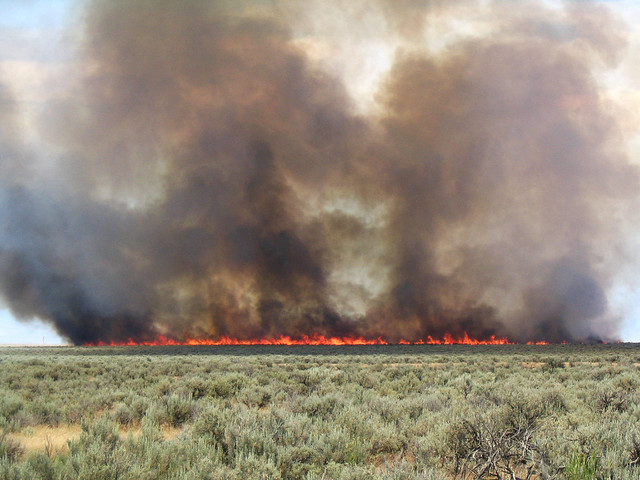
“Resilience” is the ability to recover from change, or when you think about landscapes, the ability to recover from disturbances like wildfires. A new model takes the idea of resilience and applies it to the natural environment, specifically, to sagebrush. This resilience model is one of the core elements of the new Science Framework for Conservation and Restoration of the Sagebrush Biome (Part 2).
Developed by state, federal, and university collaborators, the Science Framework provides a transparent, ecologically defensible approach for making land management decisions that reduce threats to sagebrush landscapes and the species that depend upon them, like the Greater sage-grouse.
“The Science Framework is an excellent example of state, federal and university scientists working together,” said USDA Forest Service Research Ecologist Jeanne Chambers, a lead author of the Framework. “The science-based approach that we collectively developed will help ensure that management actions are designed to benefit both the sagebrush ecosystem and the species it supports.”
The Science Framework describes emerging strategies that land managers can use to manage sagebrush landscapes, set priorities, and plan on-the-ground restoration and conservation actions.
The Science Framework is intended to link the Department of the Interior’s Integrated Rangeland Fire Management Strategy with long-term conservation and restoration actions on sagebrush landscapes. By considering elevation, climate, and soils, land managers can get a much clearer understanding of the impacts that given activities might have upon specific locations within the sagebrush biome. Chambers and her colleagues studied these relationships in a series of field trials in Utah and Nevada.
For example, higher elevation sagebrush networks are typically moist and productive, and as a result, used to burn relatively often. These fire-tolerant landscapes have higher resilience and resistance to invasive species. In contrast, lower elevation sagebrush ecosystems are drier, slower-growing, less fire tolerant, and have a harder time resisting species invasions after disturbance.
One such threat is cheatgrass, a non-native invasive species that enters disturbed areas and quickly expands after wildfires through rapid growth and prolific seed production. Cheatgrass can replace the native sagebrush species that creatures like the Greater sage-grouse depend upon for survival.
Today, lower elevation sagebrush systems with low resistance to cheatgrass are burning more frequently and over larger areas, which means we may need to look at management of those systems differently.


